《通信网络基础 英文版·第2版》
| 作者 | (美)(J.瓦尔朗)(Jean Walrand)著 编者 |
|---|---|
| 出版 | 北京:机械工业出版社 |
| 参考页数 | 336 |
| 出版时间 | 1999(求助前请核对) 目录预览 |
| ISBN号 | 7111070186 — 求助条款 |
| PDF编号 | 86757758(仅供预览,未存储实际文件) |
| 求助格式 | 扫描PDF(若分多册发行,每次仅能受理1册) |
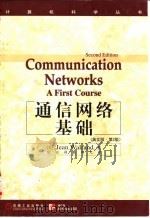
Preface xi1
Chapter1Introduxtion to Communication Networks1
1.1 What Are Communication Networks?1
1.2 Why Should YouLearn about Communication Networks?3
1.3 What Should YouLearn about Communication Networks?4
1.4 Evolution of Cimmunication networks5
1.4.1 Telephone Network5
1.4.2 Computer NetwokS6
Summary13
1.5 Organization of the Book13
Chaper2 The Way Networks Work15
2.1Etherner16
2.1.1 Shared Ethernet:Hubs and Collisions16
2.1.2 Discovering Addresses:ARPand RARP17
2.1.3 Interconnecting Ethernets:Switches and Routers18
2.2 Internet22
2.2.1 wn Exmple23
2.2.2 Routing: OSPF and BGP24
2.2.3 Transmission Control Protocol25
2.2.4 Client/Srevre Applications26
2.3 Asynchronous Transfer Mode27
2.3.1 Main Features27
2.3.2 Routing27
2.3.3 Control of QoS: Leaky Buckers28
2.4 Network Architecture30
2.4.1 Layere architecture30
2.4.2 End-to-End Services34
2.4.3 Physical View35
2.5.1 The Digital Revolution37
2.5 Complement 1:Insights behind the InformationR37
2.5.2 Sourv\ce and Channel Coding39
2.5.3 Packet Switching40
Summary42
Problems43
References46
Chapter3 Internet47
3.1A Brief History47
3.2 Architecture51
3.2.1 LAN-Link Layer51
3.2.3 Ttansport52
3.2.2 Network Layer52
3.2.4 Applications53
3.3 Names and Addresses56
3.3.1 Names56
3.3.2 ADDresses58
3.4 intermer Protocol60
3.4.1 IP Datagrams and ICMP61
3.4.2 OSPF62
3.4.3 BGP66
3.4.4Plug and Play: DHCP67
3.4.5 Mobile IP68
3.5 End-to-End Transmission68
3.5.1 Overiew68
3.5.2 retransmission Protocol69
3.5.3 TCP70
3.5.4 UDP72
3.6 Complement 1: Link Protocols72
3.6.1 SLIP72
3.7 Complement 2: Analysis of Dijkstra's Shortst Path Algorithm73
3.7.1 Definition73
3.6.2 PPP73
3.7.2 Shortest Paths74
3.8 Complement 3: Other Routing Algorithms75
3.8.1 Bellman-Ford75
3.8.2 Spanning Tree79
3.9 Complement 4: IPv680
3.10.2 Spanning Tree Routing81
3.10.3 Revese-Path Forwarding81
3.10.1 Flooding81
3.10 Complement 5: Multicast Routing81
3.10.4 Cors-Based Trees82
3.10.5 Mospf82
3.10.6PIM82
Summary83
Problems84
References87
Chapter4 Losal Area Networks88
4.1Architecture and Characteristics89
4.1.1 Architeure89
4.1.2 Gharacture of LANs90
4.2.1 Layout92
4.2 Ethermet and IEEE802.392
4.2.2 Physical93
4.2.3 MAC94
4.2.4 Cwitshed 10BASE-T95
4.2.5 100BASE-t96
4.2.6 Gigabit Etherner97
4.3 Token Ring Networks97
4.3.1 Layout97
4.3.2 Physical Layer97
4.3.3 MAC98
4.3.4 Interconnecting Token Rings99
4.4 FDDI99
4.4.1 Layout100
4.4.2 Physical Layer100
4.4.3 MAC101
4.4.4 Station Management102
4.5 wireless LANs103
4.5.1 Architecture103
4.5.2 Physical Layer104
4.5.3 Hiperlan104
4.5.4 IEEE802.11105
4.6 logical Link Control106
4.7 Complement 1: Latency of LANs107
4.8 Complement 2: Analysis of CSMA/CD Protocol108
4.8.1 CSMA/CD Protocol108
4.8.2 Efficiency of CSMA/CD109
4.8.3 Analysis109
4.8.4 Examples111
4.8.5 Average Medium Access Time112
4.8.6 Efficiency of IEEE802.3112
4.9.2 Efficiency of Token Ring MAC Protocol113
4.9 Complemt 3:Analysis of Token ring MAC Protocol113
4.9.1 Token Ring MAC Protocol113
4.9.3 Analysis114
4.9.4 Maximum Medium Access Time115
4.10 Complement 4: Analysis of FDDI MAC Protocol115
4.10.1 FDDI Protocol115
4.10.2 MMAT of FDDI Protocol116
4.10.3 Analysis116
4.10.4 Efficiency of FDDI Protocol118
4.11.2 ALOHA Protocols119
4.11 Complement 5: ALOHA119
4.11.1 Description119
4.11.3 Efficiency of FDDI Protocol120
4.11.4 Analysis120
4.11.5 Reservations122
Summary123
Problems124
References125
5.1 Architecture127
5.1.1 Protoco Layers127
Chapter5 Asynchrons Transfer Mode127
5.1.2 Three Application Examples128
5.1.3 Design Philosophy of ATM129
5.1.4 Operating Principles130
5.1.5 ATM Cell Format131
5.1.6 AAL131
5.1.7 Network Operatpions and Maintenance133
5.2 Routing in ATM135
5.2.1 Routing Tables135
5.2.2 Network Node Interface136
5.2.3 Switch Designs138
5.3 End-to-End Services140
5.3.1 Quality of Seevice Attributes140
5.3.2 Traffic Descriptors140
5.3.3 Service Classes141
5.4 Internetworking with ATM142
5.4.1 IP over ATM142
5.4.2 LAN Emulation over ATM143
5.5 Complement: Delay in Simple Switch145
Summary145
Problems146
Referenses147
Chapter6 Data Link Layer and Retransmission Protocols148
6.1Framing149
6.1.1 Encapsulation149
6.1.2 Error Control153
6.2 Retransmission Protocols157
6.2.1 Link or End-to-End Control157
6.2.2 Retransmission Protocols: Preview and Summary158
6.3 Stop-and-Wait Protocol(SWP)159
6.3.1 Summary of Operations159
6.3.2 correctness160
6.3.3 Efficiency163
6.4 Alternating Bit Protocol(ABP)164
6.4.1 Summary of Operations164
6.4.2 Correctness164
6.4.3 Efficiness165
6.5 GO BACK N(GBN)166
6.5.1 summary of Operations166
6.5.2 Efficiency167
6.5.3 Concrete Wxamples: Choosing W167
6.5.5 GO BACK N Summary168
6.5.4 Adapting to Network Delays168
6.6 Selective Repeat Protocol(SRP)169
6.6.1 Summary of Operations169
6.6.2 Efficiency170
6.6.3 Corretness170
6.6.4 Selective Repeat Protocol Summary171
6.7 Examples171
6.7.1 Data Link of SNA171
6.7.4 Data Link Layer in Frame relay172
6.7.3 Retransmission Protocol in Internet172
6.7.2 Data Link Layer of Public Data Networks(X.25)172
6.7.5 XMODEM173
6.7.6 Kermit173
6.8 Compleot 1: Error Control Codes175
6.8.1 Complating the CRC175
6.8.2 Bose-Chaudhuri-Hocquenghenm and Reed-solomon Codes177
6.8.3 Convolutional Codes181
6.8.4 Turbo Cides184
6.9 Complement 2: Correctness of ABP186
6.10.1 ABP187
6.10 Complement 3: Correctness in a Non-FIFO Network187
6.10.2 GBN188
6.11 Complement 4: Congestion and Flow Control in Internet189
6.11.1 Objectives and Meshanisms190
6.11.2 Delay/Window Mechanism190
6.11.3 Algorithm191
6.11.4 Loss/Window Mechanisms(Tahoe,Reno)191
6.11.5 Additive Increase——Multiplicase193
6.11.6 Incompatibility of Reno and Vegas194
6.11.7 Rate-Based Control: ABR in ATM195
6.11.8 Detesting Late Acknowledgments196
6.12 Complent 5: Efficiency of Protocols in the Presence of Errors197
Summary198
Problems199
References200
Chapter7 Physical Layer202
7.1Communication Links and Their Chatacteristics202
7.1.1 Digital Link202
7.1.2 Frequency and Propagation204
7.1.3 Limitations205
7.1.4 Converting between Bits and Signals209
7.2 Optical Links213
7.2.1 Overview213
7.2.2 Propagation in Fibers216
7.2.3 Light Sources218
7.2.4 Light Detectors219
7.2.5 Free-Space Infrared219
7.3 Copper Lines220
7.3.1 Overview220
7.3.2 Modulation221
7.3.3 CATV and Vibeo-on-Demand Systems223
7.4.1 Overview224
7.4 Radio Links224
7.5 Complement 1: Shannon Capacity225
8.5.1 Differential Pulse Code Modulation(DPCM)225
7.4.3 Cellular Networks225
7.4.2 Propagatin225
7.6 Complement 2: Sampling and Quantization226
7.7 Complement 3: SONET226
7.7.1 SONET Architecture229
7.7.2 Frames230
7.8 Complement 4:Power Budget in Optical Link231
7.9 Complement 5:RS-232-C233
7.10 Complement 6:ADSL234
Summary235
Problems236
References237
Chapter8 Secrity and Compression238
8.1Threats and Protestions238
8.1.1 Threats against Users239
8.1.2 Threats against Dosuments240
8.2.1 General Principles241
8.2 Cryptography241
8.2.2 Secret Key Crtptography242
8.2.4 Hashing243
8.3 Security Systems244
8.3.1 Integrty244
8.3.2 Key Management245
8.3.3 Identifixation246
8.3.4 Replisations and Deletions247
8.3.5 Kerberos248
8.3.6 Pretty Good Privacy249
8.4 Foundations of Compression250
8.4.1 Lossy and Lossless Compression250
8.4.2 Batch,Stream,Progressive,Multilayer250
8.4.3 Source Coding251
8.4.4 Finding the Minjmum Number of Bits252
8.4.5 huffman Encoding252
8.4.6 Lempel-Ziv Compression254
8.5 Audio Comperssion255
8.5.2 Adaptive DPCM(ADPCM)256
8.5.3 Suband Coding ADPCM256
8.5.4 Code Excited LInear Prediction257
8.6 Video Compression258
8.6.1 Some Algorthms258
8.6.2 Discrete Cosine Transform259
8.6.3 Motion Compensation260
8.6.4 MPEG260
8.7 Complement 1: Secret Key Cryptography261
8.7.1 Secret Codes261
8.8 Cjomplement 2: Public Key Cryptography262
8.8.1 RSA263
8.9 Cjomplement 3: Proof of RSA Lemma263
8.10 Cjomplement 4:Source Coding Theory265
Problems267
Reerences268
Chapter9 Performance Evaluation and Monitoring270
9.1Monitoring,SNMP,CMOT,andRMON270
9.2 Models and Analysis272
9.2.1 A FIFO Queue272
9.1.1 Monitoring Summary272
9.2.2 M/M/I Queue273
9.2.3 Application to Statistical Multiple275
9.2.4 Networks of M/M/i Queues276
9.2.5 M/G/I Queues277
9.2.6 A Word of Caution278
9.2.7 Queues with Vacations279
9.2.8 Priority Systems279
9.2.9 Cyclic-Servce Systems280
9.2.10 Model Summary281
9.3 Simulatiom281
9.3.1 Time-Driven Smluation281
9.3.2 Event-Driven Smluation282
9.3.3 Regenerative Smluation282
9.3.4 Simluation Packages283
9.3.5 Simluation Sunnary283
Problems284
Summary284
Referenses286
AppendixA Prlbability287
A.1Probability and Random Variadles287
A.2 Expestation290
A.3 Independence293
A.4 Regenerative Method295
A.5 Complement 1: Channel Coding298
Summary301
Problems301
Referenses303
AppendixB Queues and Netwoks of Queues304
B.1Markov Chains and M/M/I Queues304
B.2 Networks of M/M/I Queues308
B.3 Average Delays311
Summary315
Problems316
Referenses317
AppendixC Communication Principles318
C.1Frequency Spectrum318
C.2 Modulation and Demodulation320
C.3 Phase-Locked Loop322
Summary323
Referenses323
C.4 Nyquist's Sampling Theotem323
AppendixD References325
8.2.3Public Key Crtptography423
1999《通信网络基础 英文版·第2版》由于是年代较久的资料都绝版了,几乎不可能购买到实物。如果大家为了学习确实需要,可向博主求助其电子版PDF文件(由(美)(J.瓦尔朗)(Jean Walrand)著 1999 北京:机械工业出版社 出版的版本) 。对合法合规的求助,我会当即受理并将下载地址发送给你。
高度相关资料
-
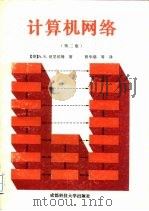
- 计算机网络 第2版
- 1989 成都:成都科技大学出版社
-

- 电信网络基础 下册
- 1978
-

- Windows 98中文版网络与通信
- 1998
-

- 数据通信与计算机网络 第2版
- 北京:高等教育出版社
-

- 信息论基础 第2版
- 1962 北京科学教育编辑室
-

- 网络时代的市场营销 英文版 第9版 英文版
- 1999 机械工业出版社
-
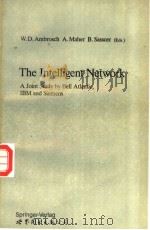
- 智能网络 英文版
- 北京/西安:世界图书出版公司
-
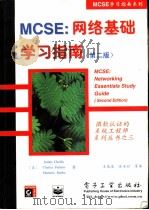
- MCSE:网络基础学习指南 第2版
- 1998 北京:电子工业出版社
-
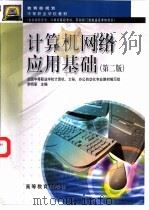
- 计算机网络应用基础 第2版
- 1997 北京:高等教育出版社
-

- 电信网络基础 下
- 1978 北京:人民邮电出版社
-

- 通信网基础
- 1999 北京:人民邮电出版社
-
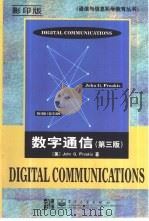
- 数字通信 英文版 第3版
- 1998 北京:电子工业出版社
-

- 网络基础
- 1999 北京:中华工商联合出版社
-

- 计算机网络 第2版
- 1999 北京:电子工业出版社
-

- 计算机网络基础 第2版
- 1999 北京:电子工业出版社
提示:百度云已更名为百度网盘(百度盘),天翼云盘、微盘下载地址……暂未提供。➥ PDF文字可复制化或转WORD